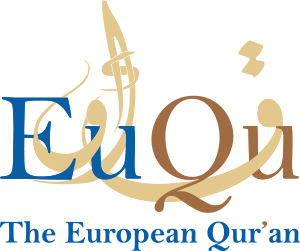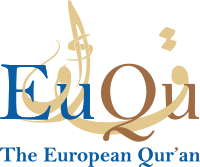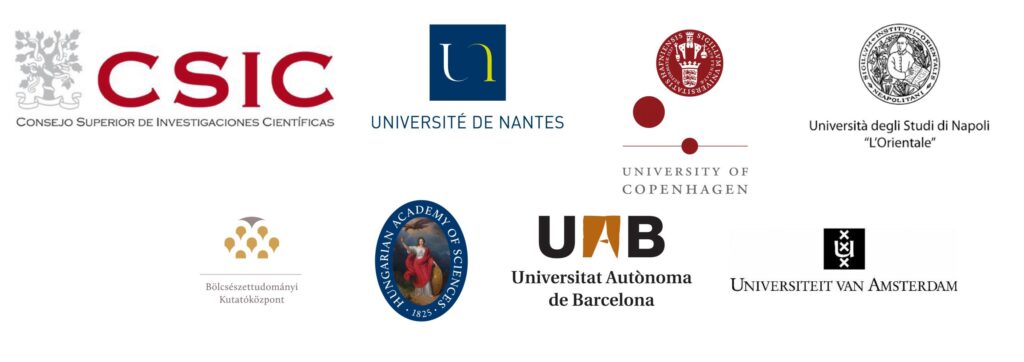ERC EuQu, Nantes, 11-12 May 2023
(deadline for the submission of proposals: 24 October 2022)
The Nantes Université researchers of the ERC project EuQu – The European Qur’ān are pleased to announce the organisation of a conference devoted to the problem of defining the nature of the Qur’ān in Europe in the 12th-19th centuries.
How did medieval and modern Europeans perceive what the Qur’ān is? What definitions did they give, and what definitions underlie the representations they developed? How did they conceive the Qur’ān in relation to what was familiar to them and to their concerns? In what ways did they grasp, define and represent its different facets over the centuries? Participants will be invited to reflect on these questions through the study of lexicographical, encyclopaedic, technical, literary and scholarly works, as well as theatrical pieces and artistic representations.
READ THE CALL (in English)
READ THE CALL (IN FRENCH)
What is the European Qur’ān?
Definitions, descriptions, representations (12th-19th c.)
Over the centuries, Muslim religious thought has taken hold of the Qur’ān in its textual and canonical materiality, but also as a theological object. This is evidenced by the rich vocabulary denoting revelation (kitāb or book; qur’ān or recitation; kalām Allāh, the word of God; furqān, an ambiguous term that is often translated as ‘criterion’; tanzīl or descent; waḥy or inspiration; muṣḥaf, the Qur’ānic codex), but also by the discussions on the modalities of its revelation (kayfiyyāt al-tanzīl) and the famous controversy about its created or uncreated nature (Watt, Wolfson). The Qur’ān itself puts forward the bases of a sophisticated prophetology and theology of revelation (Boisliveau, Andani). A self-referential text par excellence, the Qur’ān dedicates many passages to legitimising its authority and arguing its heavenly nature preserved in the “Well-Guarded Tablet” (Q 85: 22) or the “Mother of Books” (Q 43: 3).
To a certain extant aware of the complex significance of the Qur’ān in the Islamic tradition, European Christians have also had to grapple with the problem of defining the “Alcoran”. Indeed, the problem of its definition has been the subject of varied reflections and debates which have marked the history of the European reception of the Muslim scripture, even in contexts most alien to scholarly disputes. The Qur’an self-definition, the theorisations developed in the Muslim world and the representations elaborated in the Christian world have intersected or repelled each other variably according to the times, the authors and the contexts. Faced with this plurality of definitions touching on different aspects of the nature of the Qur’ān, how have European Christians conceived what the Qur’ān is? In what ways have they defined, grasped and represented its different facets? Or, how did they recast and reinterpret them? How did they conceive the Qur’ān in relation to what was familiar to them (notably the Bible) and in relation to their concerns (anti-Muslim polemics, interfaith controversies, deistic aspirations, language learning, literary tropes etc.)?
Methodology
We seek to address these issues via a composite corpus, including a wide variety of genres ranging from literary texts to scholarly works (dictionaries, encyclopaedias, etc.). We also mean to encourage a diachronic approach in order to trace the different branches of definitions and representations of the Qur’ān over the long period, according to the following four axes: lexical, referential, genetic/theological and artistic. Words and expressions derived from the word Alcoran(us) (alcoranist(e/a), Alcoran of […] etc.), as well as other appellations given to the sacred book (both paraphrases, as Mohammedan law, Saracen law, etc., and other Arabic terms used as synonyms to Qur’ān, as Meshaf or al-furqān) will also be considered.
Proposed research lines
- Lexical axis: naming and defining the Qur’ān
The first axis calls for lexicographical and semantic considerations on the development of the concept of alcoran, in all its formal variants. What definitions of the term are given? What vision(s) can be deduced from them? What definition of the term can be inferred from the information given by the authors, their rhetorical strategies, the semantic environment etc.?
First, we will examine what the term alcoran means in the studied texts (Arveiller; FEW 19, 99b), but especially in scholarly, encyclopaedic, and lexicographical works (Azouzi, Alilouche). The definitions and examples provided by these works, in accordance with their original purpose, are particularly revealing of their evolution over the course of their reissues. What can we learn from the examples selected by the authors to illustrate their definition of the Qur’ān?
Next, we will question all the terms that can designate the Qur’ān. Although the term alcoranus quickly became standardised in the Latin language, authors often preferred paraphrases such as Lex Mahumeti or Lex Sarracenorum. These appellations indicate how the nature of the Qur’ān was envisaged (‘lex’ comes under a normative reading that evokes a book of guidelines), but also its alleged author (‘Lex Mahometi’ immediately connects the Qur’ān to the Prophet, who becomes its author) and its followers (‘Lex Sarracenorum’ associates the Qur’ān with the Saracens, a category with shifting contours intersecting ethnic, linguistic, and cultural fields). The Qur’ān is also referred to by synonyms such as meshaf (muṣḥaf) et alfurqan (al-furqān): for example, the term alfurqan is used as a synonym of Alcoran quite early on (Risālat al-Kindī, William of Tripoli…) and benefits from its own definition.
- Referential axis: what does the word “Qur’ān” designate?
The second research line concerns the semantic vitality of the term Qur’ān. In the early modern period, the label Qur’ān, generally connoted in a pejorative way, can be used to designate texts of a disparate nature. In the Alcoranus Franciscanorum (1542), the common variant Alcoranus is used within a context of an intra-Christian polemic and is defined as “” (“a pool of lies and blasphemies”) held by Saint Francis’ most zealous followers. On the other hand, in the Alcoran de Louis XIV (1695), the term Alcoran refers to the alleged Machiavellian political catechism the Cardinal Mazarin is said to have inculcated in the young Roi Soleil.
Things began to change between the 17th and 19th centuries, when the semantic spectrum of the term Qur’ān broadened and started to include neutral or even positive meanings. Victor Hugo, as other 19th century authors, uses the word Qur’ān just like the word Bible to designate a reference book. In this same period, dictionaries record the spread of idiomatic expressions gravitating around the word Qur’an that are worth our attention (see for example, in the Littré dictionary, “Familièrement. Je n’y entends pas plus qu’à l’Alcoran, Je n’y entends rien”: “Informal. I can’t understand it any more than I can understand the Alcoran, I can’t understand it at all”).
A special attention will finally be devoted to elusive, a contrario and in absentia definitions of the Qur’ān. It is not uncommon, in fact, to come across texts that, by means of truthful or apocryphal quotations, attribute the name Qur’ān to textual items with loose or even inexistent relationship with the sacred book of Islam. An analysis of these case studies will therefore have the aim to identify the various meanings and functions of the term Qur’ān they convey, answering to the question: how can the Qur’ān be defined in the negative by the texts that exploit its name?
A final question arises from the previous remarks: how do the authors reimagine the content of the Qur’ān? From what model(s)? From what preconception(s)? One of our aims will thus be to focus on identifying the different ideological, cultural and epistemological parameters that inform the perceptions and representations of the Qur’ān offered by the questioned corpus.
- Genetic/theological axis: origin and theological status of the Qur’ān
The third research line is devoted to attempts by European Christian authors to grasp (and challenge) the theological status attributed to the Qur’ān in Islam. The Qur’ān claims to confirm the “Torah and the Gospel” (Q 3: 3 and passim). It presents itself as the direct word of God, revealed gradually according to the needs encountered by the community led by Muḥammad (Q 25: 32; Q 17: 106). The status of the Qur’ān is reinforced in the Islamic tradition by a complex “mythology” of its revelation involving an initial “descent” (tanzīl) from the “Well-guarded Tablet” (Q 85: 22) to the lower Heaven and then, from there, its fragmentation into brief messages transmitted to Muḥammad by the angel Gabriel.
This axis will examine European authors’ reactions to the Qur’ān as the revealed word and sacred book of the Muslims: how were the self-referential Qur’ānic passages translated, annotated, and criticized? What reactions do European Christian authors display or betray with regards to the “mythology” of the revelation of the Qur’ān? How did medieval polemical legends develop around the revelation? How were these same legends adjusted, criticised, rejected?
European accounts of the genesis of the Qur’ān are of several kinds. On the one hand, they may reflect an attempt at precision, as in the case of Peter the Venerable, who exhibits, in a work that he frames as addressed to a “Saracen” reader, a fine knowledge of the fragmented and oral revelation of the Qur’ān. On the other hand, these narratives may belong to what we will call “alternative mythologies” of the revelation of the Qur’ān. This category encompasses different legends and/or polemical rewritings which address and reframe issues such as the mythology and the theology of revelation (in relation and in opposition to the Bible), the “descent” from heaven, the claim that it is the direct word of God, its ad hoc nature etc.
- Artistic axis: visual representations of the Qur’ān
The fourth and last research line, aiming to study the ways in which Europeans have conceived the materiality of the Qur’ān, is focused on its representations in visual arts and theatre. Figurative and theatrical representations of the Qur’ān as an object (miniatures, engravings, paintings etc.; stage directions, props shown or used on stage etc.) both reflect and nourish the imagery related to the sacred book of Islam: their analysis allows then to study the material characteristics that are attributed to the Qur’ān in medieval and modern Europe, as well as particularities concerning its handling, exhibition and use – also in relation to votive, ritual and practical/technical (e.g. juridical, political) functions.
Although this field of investigation has been addressed by recent studies (e.g. Saviello, Shalem), much work still needs to be done. To give just one example, early modern English theatre has already been studied from this perspective (Birchwood, Dimmock) whereas theatre of the same period from other cultural or linguistic areas has not received the same attention, even though several plays involve the presence on stage or the mention of the Qur’ān.
Selected bibliography
Alilouche, Hayat. 2021. Représentations de l’islam dans les dictionnaires et les encyclopédies du XVIIIe au XXe siècle. PhD dissertation, Normandie Université.
Andani, Khalil. 2020. Revelation in Islam: Qur’ānic, Sunni, and Shi’i Ismaili Perspectives. Doctoral dissertation, Harvard University, Graduate School of Arts & Sciences.
Arveiller, Raymond. 1984. “Addenda au FEW (Orientalia): 14e article”, in Zeitschrift für romanische Philologie 100, 321-354.
Azouzi, Ammar. 2016. Arabe / Musulman : Archéologie du discours et des représentations dans les dictionnaires de langue française. Saint-Denis: Connaissances & Savoirs.
Birchwood, Matthew. 2007. Staging Islam in England: Drama and Culture, 1640-1685. Woodbridge: Boydell & Brewer.
Boisliveau, Anne-Sylvie. 2014. Le Coran par lui-même. Vocabulaire et argumentation du discours coranique autoréférentiel. Leyden : Brill.
Dimmock, Matthew. 2005. New Turkes: Dramatizing Islam and the Ottomans in Early Modern England. Aldershot and Burlington: Ashgate Publishing.
Hanne, Olivier. 2019. L’Alcoran: comment l’Europe a découvert le Coran. Paris: Belin.
Saviello, Alberto. 2015. Imaginationen des Islam. Bildliche Darstellungen des Propheten Mohammed im west-europäischen Buchdruck bis ins 19. Jahrhundert, Berlin / München / Boston: De Gruyter.
Shalem, Avinoam. 2013. Constructing the Image of Muhammad in Europe, Berlin / München / Boston: De Gruyter.
Smith, Wilfred Cantwell. 1993. What is Scripture: a Comparative Approach. Minneapolis: Fortress Press.
Tischler, Matthias M. 2014. “Lex Mahometi. Die Erfolgsgeschichte eines vergleichenden Konzepts der christlichen Religionspolemik”, in Das Gesetz – The Law – La Loi, ed. Andreas Speer and Guy Guldentops, Berlin/München/Boston: De Gruyter, 527-573.
Watt, Montgomery. 1950. “Early Discussions about the Qur’an”. The Muslim World, 40/2, 96-105.
Wolfson, Harry Austryn. 1976. The Philosophy of the Kalam. Cambridge, MA: Harvard University Press.
Participation is by invitation.
Those invited to submit a proposal should send a one-page (maximum) abstract to euqu_equipe_nantes@univ-nantes.fr by 24 October 2022.
Languages: English or French
Program Committee:
- Maurizio Busca, Post-doc Nantes Université
- Florence Ninitte, Post-doc Nantes Université
- Irene Reginato, Post-doc Nantes Université
- Emmanuelle Stefanidis, Post-doc Nantes Université
- John Tolan, Professor Nantes Université and Principal Investigator of the ERC EuQu
Mailing List
To join our mailing list and receive updates about EuQu activities




